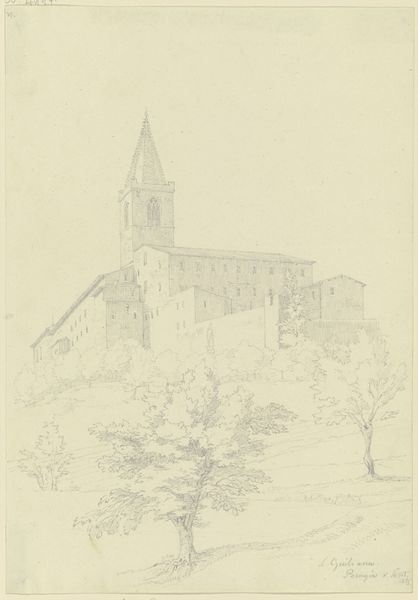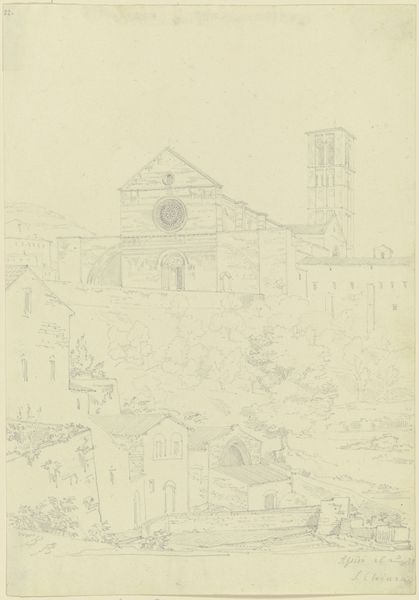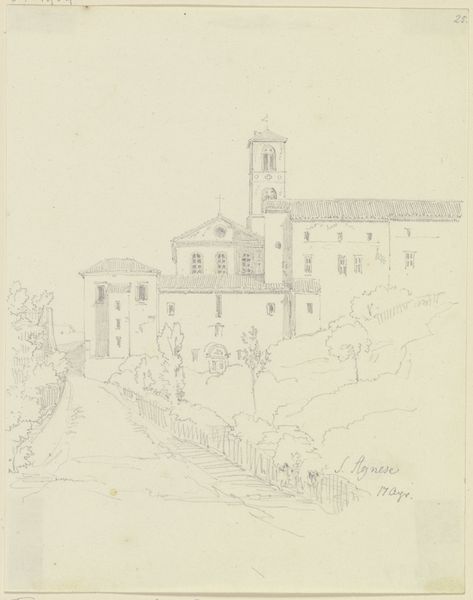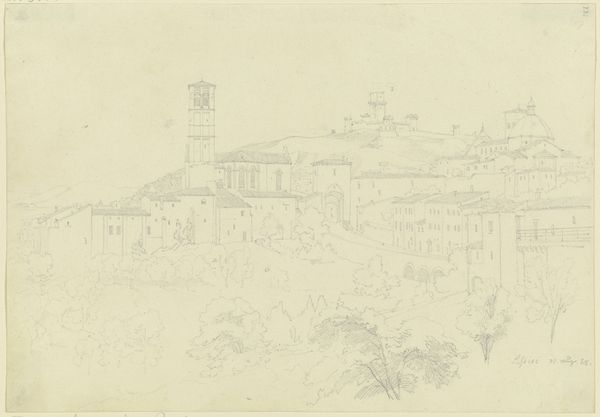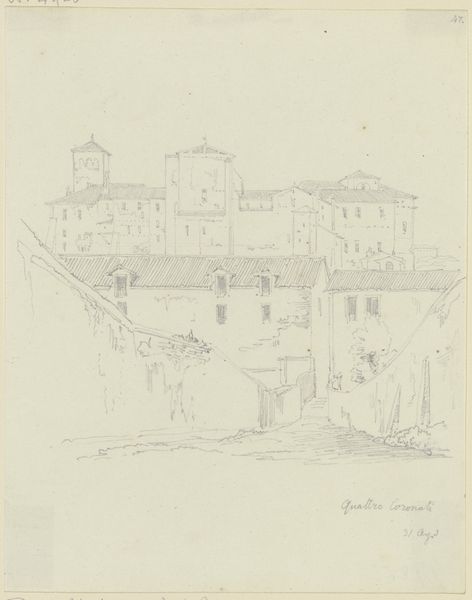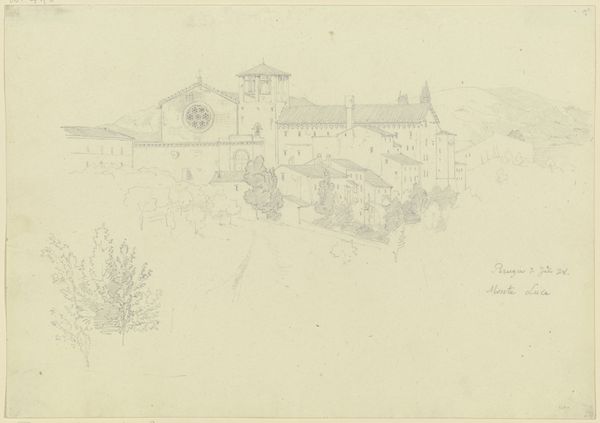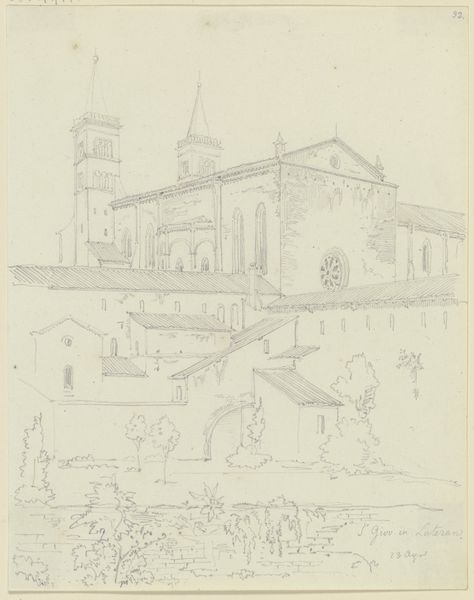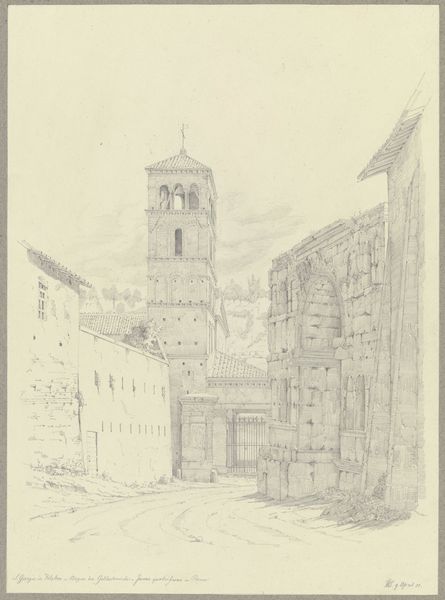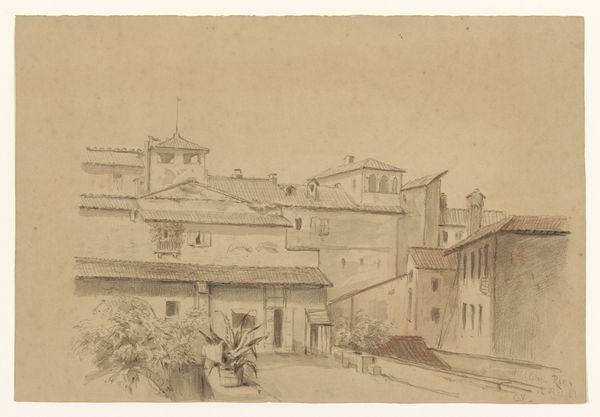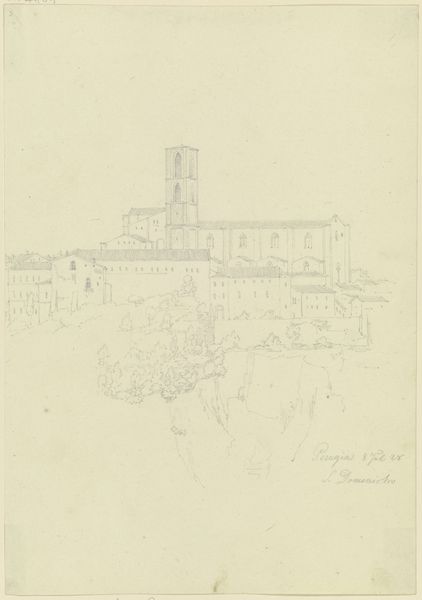
Copyright: Public Domain
Curator: What strikes you immediately about this cityscape, before we dive into the specifics? Editor: There’s a delicate tranquility here. Almost feels like a whisper of a city, or a dream. Curator: Precisely. This is "St Pietro in Perugia," a drawing by Friedrich Maximilian Hessemer, created in 1828, now held in the Städel Museum's collection. It exemplifies Neoclassical landscape drawing through precise linework and compositional balance, primarily rendered in graphite and pencil. Editor: That pencil work! It gives everything a muted tone, doesn't it? The details of the architecture melt slightly into the rolling landscape, blurring the distinction between the built environment and nature itself. The etching quality contributes to a sort of ethereal atmosphere, like gazing through fog. Curator: I agree. Hessemer uses a structured approach to perspective, emphasizing the geometry of the buildings while integrating them smoothly into the organic surroundings. Semiotically, we observe how architectural elements, such as the bell tower and building facades, are presented not just as structures, but as signifiers of civic and religious authority. Editor: That’s certainly a solid way of putting it. Though, on the flip side, I can imagine sitting right there in that field and sketching. Curator: Indeed, Hessemer’s skill evokes a unique sentiment for the observer. What do you think that may say about the architecture of that time? Editor: Perhaps, that even the grandest achievements of man can seem as dreamlike and impermanent as we are. A somber thought, maybe. But ultimately, a comforting perspective in its own way, you know? Curator: A comforting thought perfectly synthesized to round off our discussion. Editor: Thank you! That truly means a lot.
Comments
No comments
Be the first to comment and join the conversation on the ultimate creative platform.
